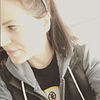Take a photo of a barcode or cover
75 reviews for:
Creative Schools: The Grassroots Revolution That's Transforming Education
Ken Robinson, Lou Aronica
75 reviews for:
Creative Schools: The Grassroots Revolution That's Transforming Education
Ken Robinson, Lou Aronica
Dull and annoying. Ken can't go a few pages without referencing something he had written in another book of his. This book is a bad knockoff of a Malcolm Gladwell book.
hopeful
informative
inspiring
reflective
slow-paced
adventurous
hopeful
reflective
medium-paced
Good read, and another Hallelujah chorus. Robinson tells us we need more creativity, people working together, groups working together. We know this.
An inspiring anecdotal look at the change that creativity and personalization can make in the education system.
informative
An interesting commentary that is connected to his TedEd Talk about the current state of our classrooms and how to support curiosity, promote creativity and attempt to be a radical inside your own school.
How many books on education are there that mention almost all factors affecting learning and teaching? I don’t know.
How many books are there that I read and re-read and took marginalia carefully as if they are borrowed from libraries and I won’t have access to them anymore? This one.
Kidding, I’ll buy it.
How many books are there that I read and re-read and took marginalia carefully as if they are borrowed from libraries and I won’t have access to them anymore? This one.
Kidding, I’ll buy it.
A must-read for anyone who wants to see revolutionary change in education. Sir Ken does it again!
Robinson weaves anecdotal accounts of schools he deems creative in their approach to education with his own theory about changes that should happen across all stakeholders in education which include teachers, principals, curriculum, and parents.
I agree that change definitely needs to happen and that all stakeholders should play a role in exacting this change. However, I feel as though these approaches in practice hold charter and private schools in a much higher esteem that our public schools. Furthermore, an omitting this divide in this book feels almost like a slap in the face for educators who do not have as much agency compared to the educators who definitely do in each of the institutions he points to as exemplars of modern education.
These accounts mean to present examples of schools who exacted some sort of change that rendered a positive outcome for all, but I do wonder what unintended consequences might have occurred that do not render each of these accounts as a net positive.
Overall not a bad read. Much would have preferred to see a take on creative schooling that addresses issues that go beyond the scope that Robinson did here.
I agree that change definitely needs to happen and that all stakeholders should play a role in exacting this change. However, I feel as though these approaches in practice hold charter and private schools in a much higher esteem that our public schools. Furthermore, an omitting this divide in this book feels almost like a slap in the face for educators who do not have as much agency compared to the educators who definitely do in each of the institutions he points to as exemplars of modern education.
These accounts mean to present examples of schools who exacted some sort of change that rendered a positive outcome for all, but I do wonder what unintended consequences might have occurred that do not render each of these accounts as a net positive.
Overall not a bad read. Much would have preferred to see a take on creative schooling that addresses issues that go beyond the scope that Robinson did here.



